Evolutionary Ecology
The department of Evolutionary Ecology gathers complementary skills in behavioural ecology, population dynamics, population biology, community ecology, and methodology (statistics and modelling). The research done in the department aims at studying how animal species evolve in a changing world by understanding the causes of the evolution of traits, adaptations and interactions. For that, we consider different levels of organization from individuals to populations and communities. Because organisms cannot be considered isolated from other biotic factors, we consider pathogens but also competing species within communities.
We study how individuals adapt to their environments that are largely impacted by anthropic pressures, and how life history traits and behaviour evolve in response to these pressures. Although we mainly focus on phenotype, we more and more consider the mechanistic link between the genotype and the phenotype. We develop the theoretical framework of our discipline through a conceptual and modeling approach. In parallel, we test hypotheses that arise from theoretical predictions through experimental, comparative and observational approaches on different biological models (insects, birds, mammals). Experimental approaches are developed in the laboratory (insect model) and in natura (bird, insect and mammal models). Observational and comparative research is mainly concerned with vertebrates. Our approaches are also, and increasingly, interested in the mechanisms of adaptive responses. In addition to the classical approaches of demographic analysis and trait change, methods of ecophysiology, chemical ecology and molecular biology are used.
Our department hosts several long-term studies of wild populations of different species. These long-term studies offer a valuable way to understand how biotic and abiotic factors affect individuals’ life history traits, and the functioning of populations in natura. Five populations of mammalian species are thus monitored for several years (more than 40 years on roe deer, 30 on Alpine marmots, 25 years on cats, 16 years on zebras, and 20 years on impala). Two of our study sites (La Sassière in Vanoise National Park (Alpine marmots) and Hwange National Park) have been certified as “Site d’Etude en Ecologie Globale” (SEEG), and two (ZA “Hwange” and ZA “Antarctic and sub-Antarctic”) were certified as “Zone Atelier” by the CNRS.
The department of Evolutionary ecology is also largely involved in training activities. Lastly, we also have strong socio-economic relationships. Indeed, because we address questions of major societal interest (global warming, public health) we tightly collaborate with socio-economic partners (Office Français de la Biodiversité, Vanoise National Park, Hwange National Park in Zimbabwe, Office National des Forêts, etc.) and participate to general public and media events.
Publications
Display of 511 to 540 publications on 2459 in total
Thermal conditions predict intraspecific variation in senescence rate in frogs and toads
Proceedings of the National Academy of Sciences of the United States of America . 118 ( 49 ) : e2112235118
Journal article
see the publicationIs degree of sociality associated with reproductive senescence? A comparative analysis across birds and mammals
Philosophical Transactions of the Royal Society B: Biological Sciences . 376 ( 1823 ) : 20190744
Journal article
see the publicationMany lifetime growth trajectories for a single mammal
Ecology and Evolution . 11 ( 21 ) : 14789-14804
DOI: 10.1002/ece3.8164
Journal article
see the publicationApplying comparative methods to different databases: lessons from demographic analyses across mammal species
Demographic Methods across the Tree of Life . 9780198838609
Book chapter
see the publicationNatural Selection beyond Life? A Workshop Report
Life . 11 ( 10 ) : 1051
DOI: 10.3390/life11101051
Journal article
see the publicationNew Insights into the Mammalian Egg Zona Pellucida
International Journal of Molecular Sciences . 22 ( 6 ) : 3276
DOI: 10.3390/ijms22063276
Journal article
see the publicationOvercoming the Spurious Groups Problem in Between-Group PCA
Evolutionary Biology .
Journal article
see the publication3D models related to the publication: Patterns of bilateral asymmetry and allometry in Late Devonian Polygnathus conodonts
MorphoMuseum . 7 ( 2 )
Journal article
see the publicationAssortative mating for between‐patch dispersal status in a wild bird population: Exploring the role of direct and indirect underlying mechanisms
Journal of Evolutionary Biology .
DOI: 10.1111/jeb.13925
Journal article
see the publicationInter-individual variation in provisioning rate, prey size and number, and links to total prey biomass delivered to nestlings in the Collared Flycatcher (Ficedula albicollis)
Avian Research . 12 : 15
Journal article
see the publicationConnecting the data landscape of long‐term ecological studies: the SPI‐Birds data hub
Journal of Animal Ecology . 90 ( 9 ) : 2147-2160
Journal article
see the publicationAre human natal sex ratio differences across the world adaptive? A test of Fisher's principle
Biology Letters . 17 ( 3 )
Journal article
see the publicationDoes timing of birth affect juvenile and mare survival in wild plains zebra?
Preprint
see the publicationCan citizen science analysis of camera trap data be used to study reproduction? Lessons from Snapshot Serengeti program
Wildlife Biology . 2021
DOI: 10.2981/wlb.00833
Journal article
see the publicationDemande d’évaluation du rôle épidémiologique du renard dans la transmission de la tuberculose bovine
: 91 p.
Report
see the publicationEstimating disease prevalence and temporal dynamics using biased capture serological data in a wildlife reservoir: The example of brucellosis in Alpine ibex (Capra ibex)
Preventive Veterinary Medicine . 187 : 105239
Journal article
see the publicationTranscriptome Profiling of Starvation in the Peripheral Chemosensory Organs of the Crop Pest Spodoptera littoralis Caterpillars
Insects . 12 ( 7 ) : 573
Journal article
see the publicationThe Worldwide Invasion of Drosophila suzukii Is Accompanied by a Large Increase of Transposable Element Load and a Small Number of Putatively Adaptive Insertions
Molecular Biology and Evolution . 38 ( 10 ) : 4252-4267
Journal article
see the publicationLifespan decreases with proportion of sons in males but not females of zoo‐housed tigers and lemurs
Journal of Evolutionary Biology .
DOI: 10.1111/jeb.13793
Journal article
see the publicationVenezuelan Equine Encephalitis Complex Alphavirus in Bats, French Guiana
Emerging Infectious Diseases . 27 ( 4 )
Journal article
see the publicationPathogen‐mediated selection favours the maintenance of innate immunity gene polymorphism in a widespread wild ungulate
Journal of Evolutionary Biology . 34 ( 7 ) : 1156-1166
DOI: 10.1111/jeb.13876
Journal article
see the publicationMetabarcoding in two isolated populations of wild roe deer (Capreolus capreolus) reveals variation in gastrointestinal nematode community composition between regions and among age classes
Parasites & Vectors . 14 : 594
Journal article
see the publicationEvaluation, à l’aide de modèles à classes latentes, des performances diagnostic des tests ELISA commercialisés pour le diagnostic sérologique des infections par Coxiella burnetii chez les ruminants domestiques
17ème Rencontre des Microbiologistes du Pôle Clermontois .
Conference paper
see the publicationOne and multi-compartments toxico-kinetic modeling to understand metals’ organotropism and fate in Gammarus fossarum
Environment International . 156 : 106625
Journal article
see the publicationThe added value of Bayesian inference for estimating biotransformation rates of organic contaminants in aquatic invertebrates
Aquatic Toxicology . 234 : 105811
Journal article
see the publicationCytotype Affects the Capability of the Whitefly Bemisia tabaci MED Species To Feed and Oviposit on an Unfavorable Host Plant
mBio . 12 ( 6 ) : 1-16
Journal article
see the publicationMicroorganisms Associated with Mosquito Oviposition Sites: Implications for Habitat Selection and Insect Life Histories
Microorganisms . 9 ( 8 ) : 1589
Journal article
see the publicationInferring insect feeding patterns from sugar profiles: a comparison of statistical methods
Ecological Entomology . 46 ( 1 ) : 19-32
DOI: 10.1111/een.12971
Journal article
see the publicationMaternal effects shape offspring physiological condition but do not senesce in a wild mammal
Journal of Evolutionary Biology . 34 ( 4 ) : 661-670
DOI: 10.1111/jeb.13768
Journal article
see the publication
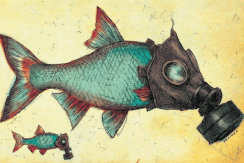
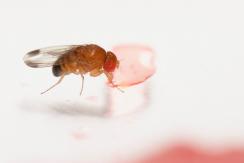
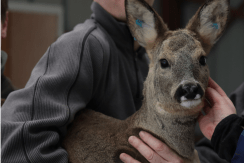
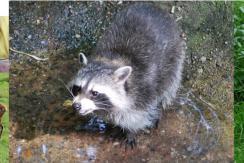
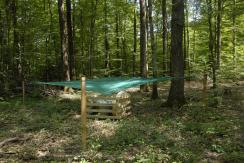
You also, comment on this article